The Frankenfood
All images presented were computer generated.
Each piece of produce is first shown individually, and the right-most final image is the combination of the previous two.
An Exploration of Food, Art & Machine Learning.
All images presented were computer generated.
Each piece of produce is first shown individually, and the right-most final image is the combination of the previous two.
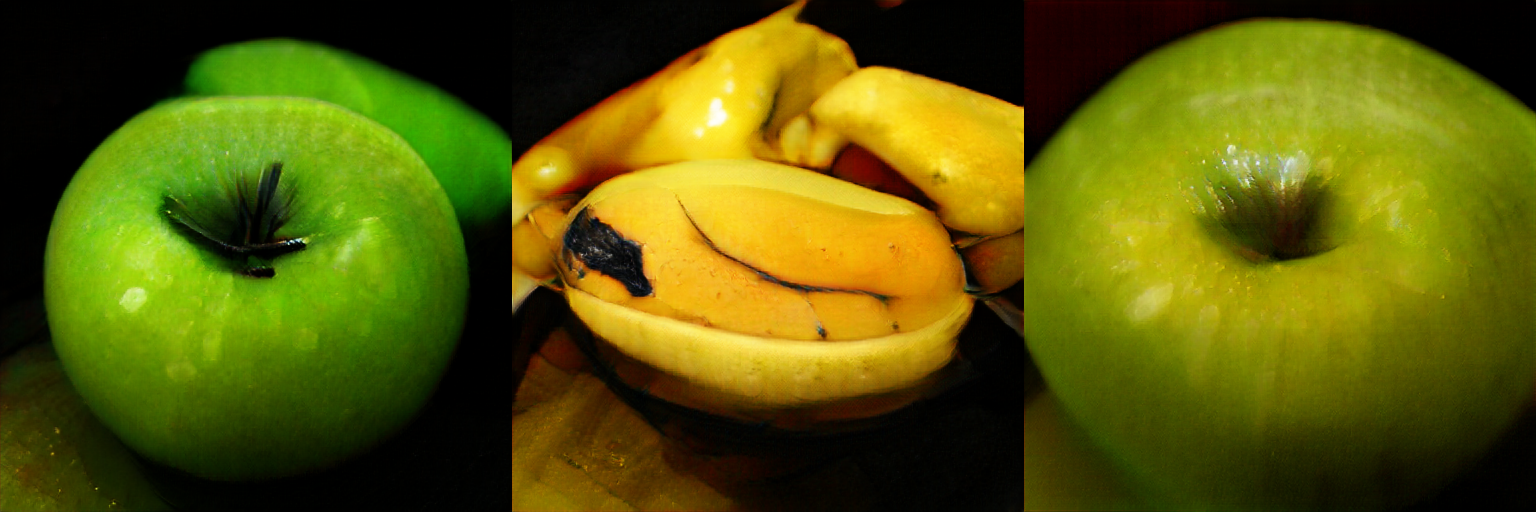
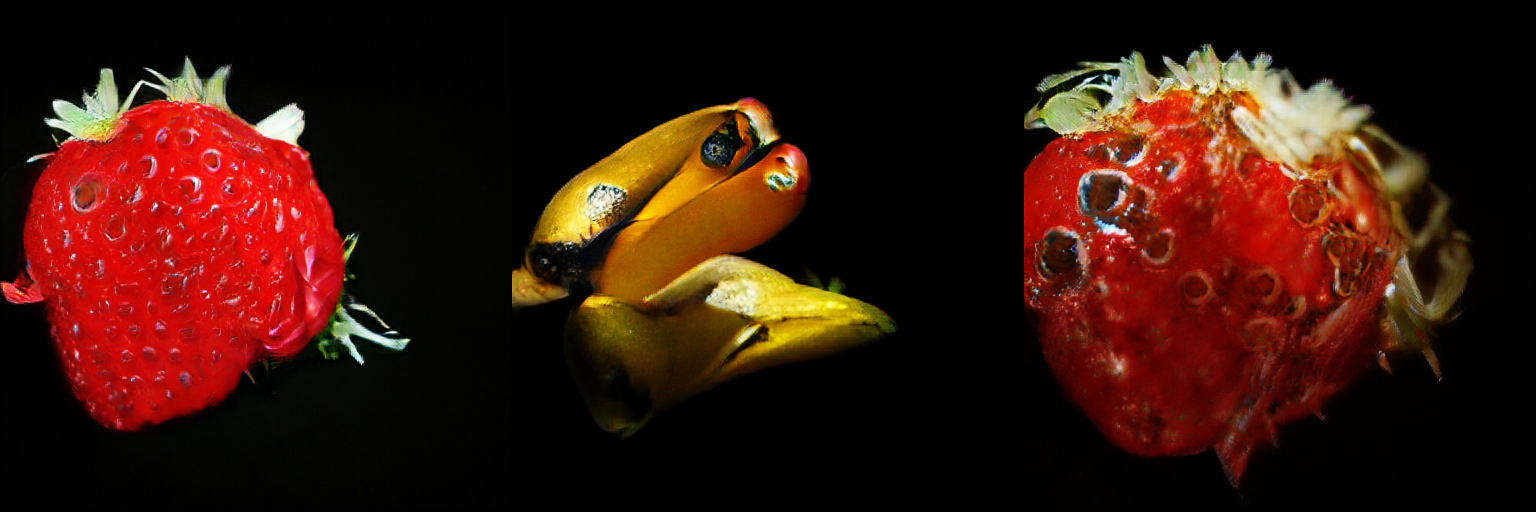
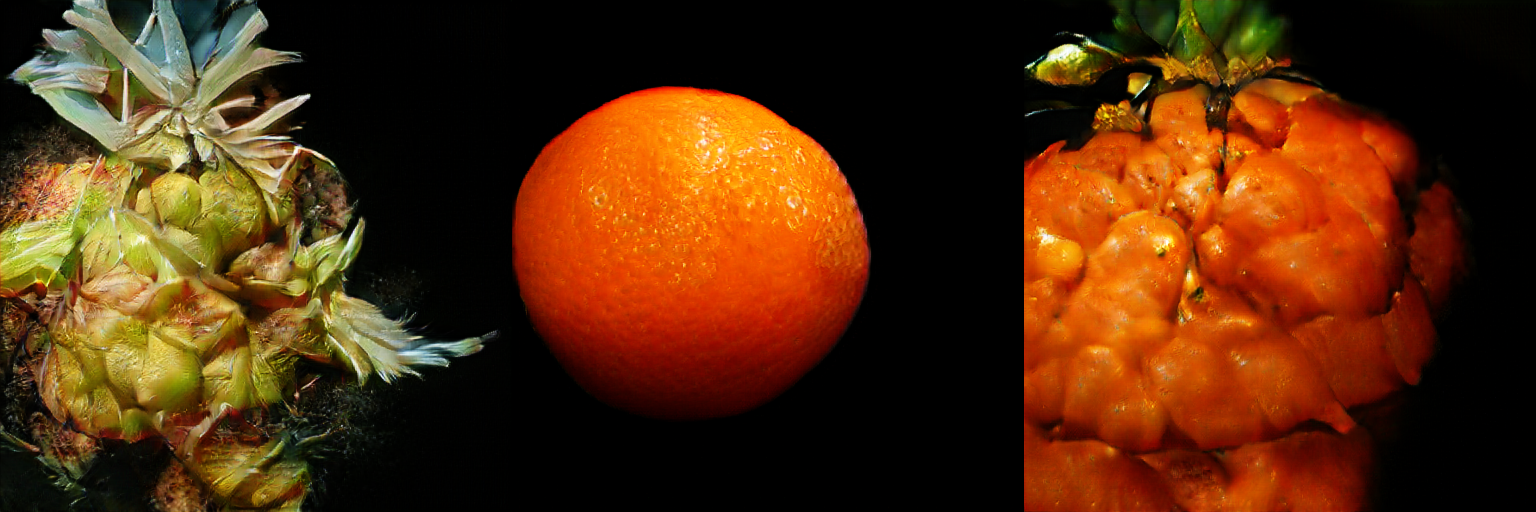
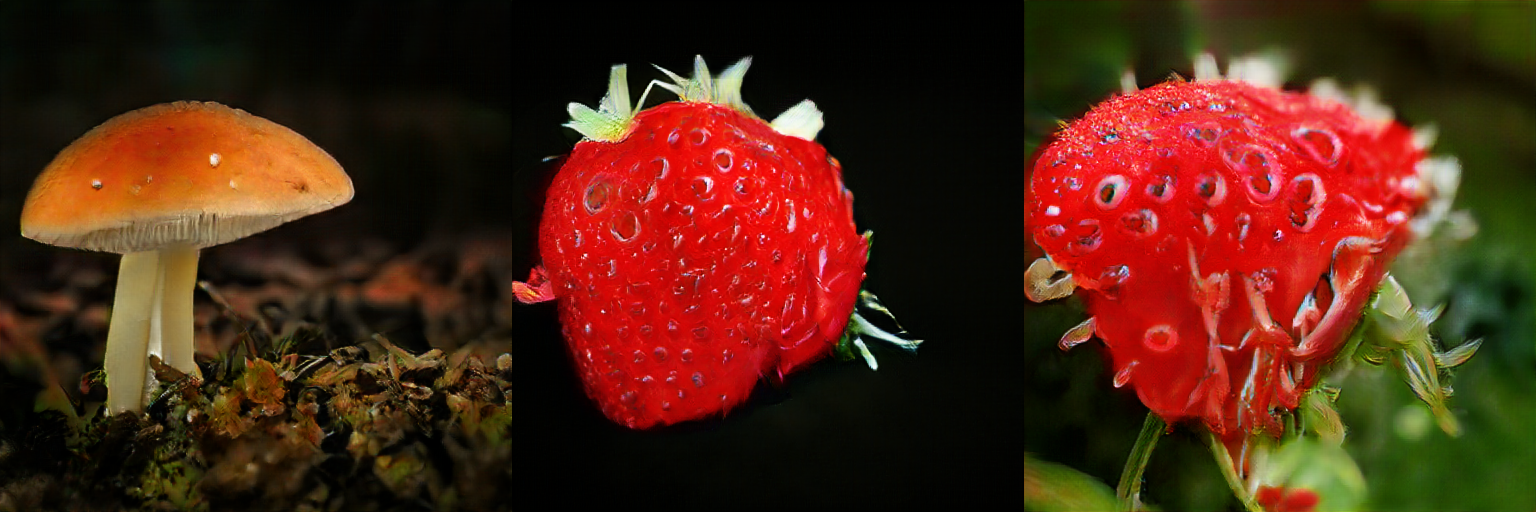
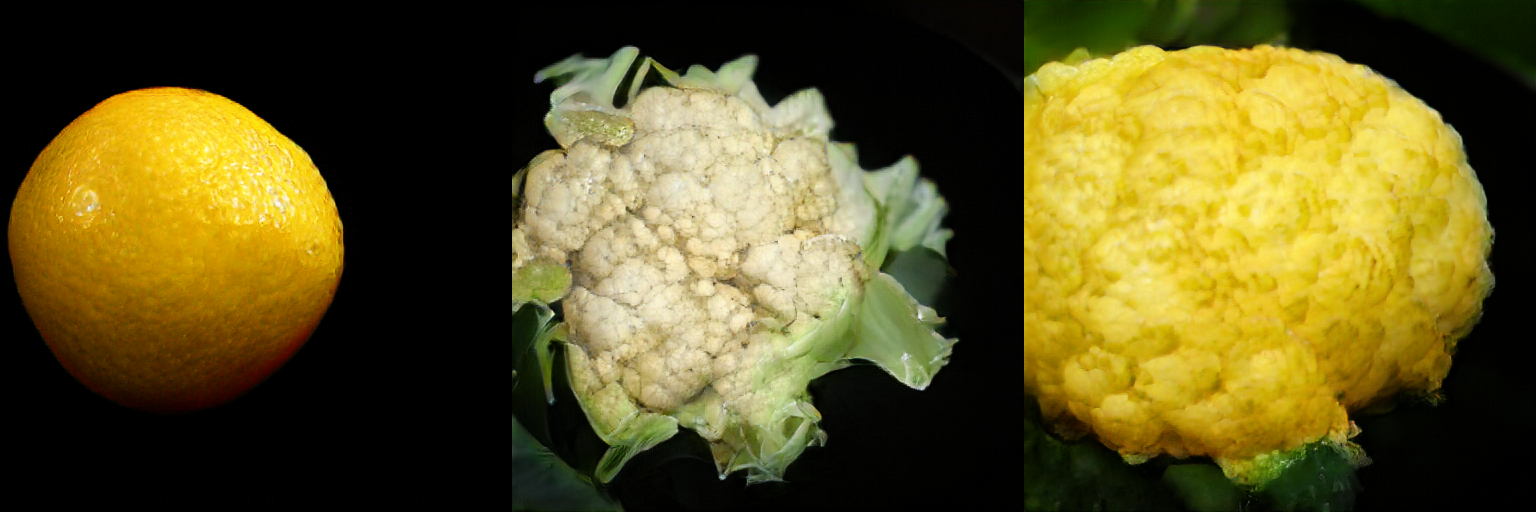
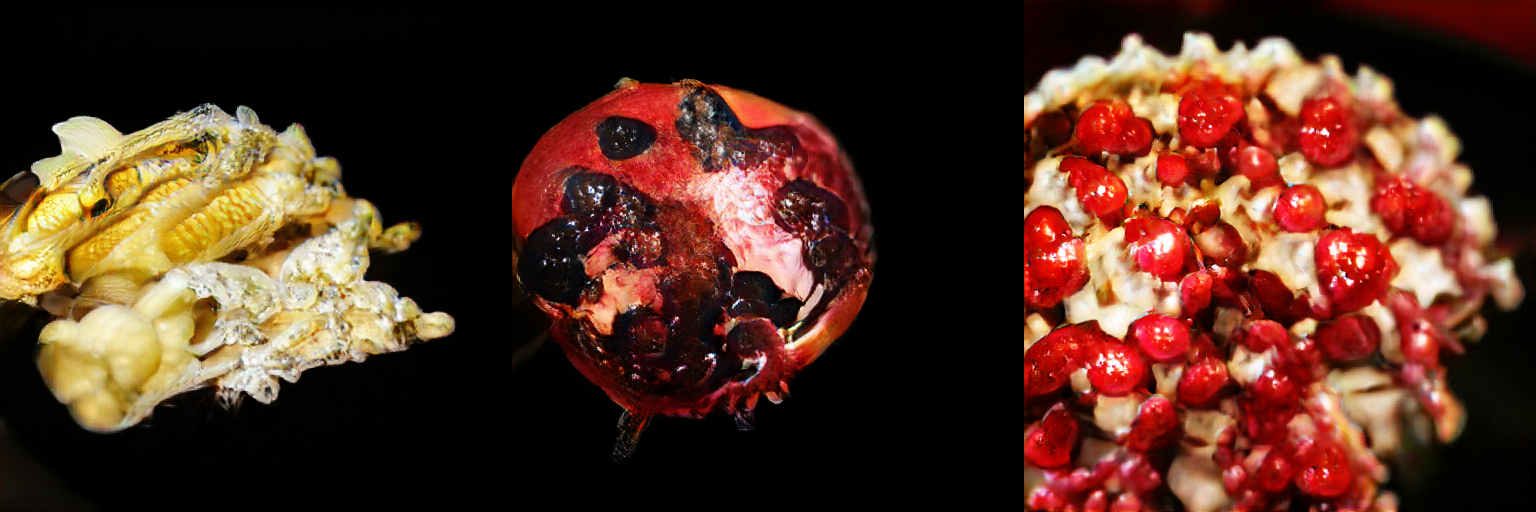

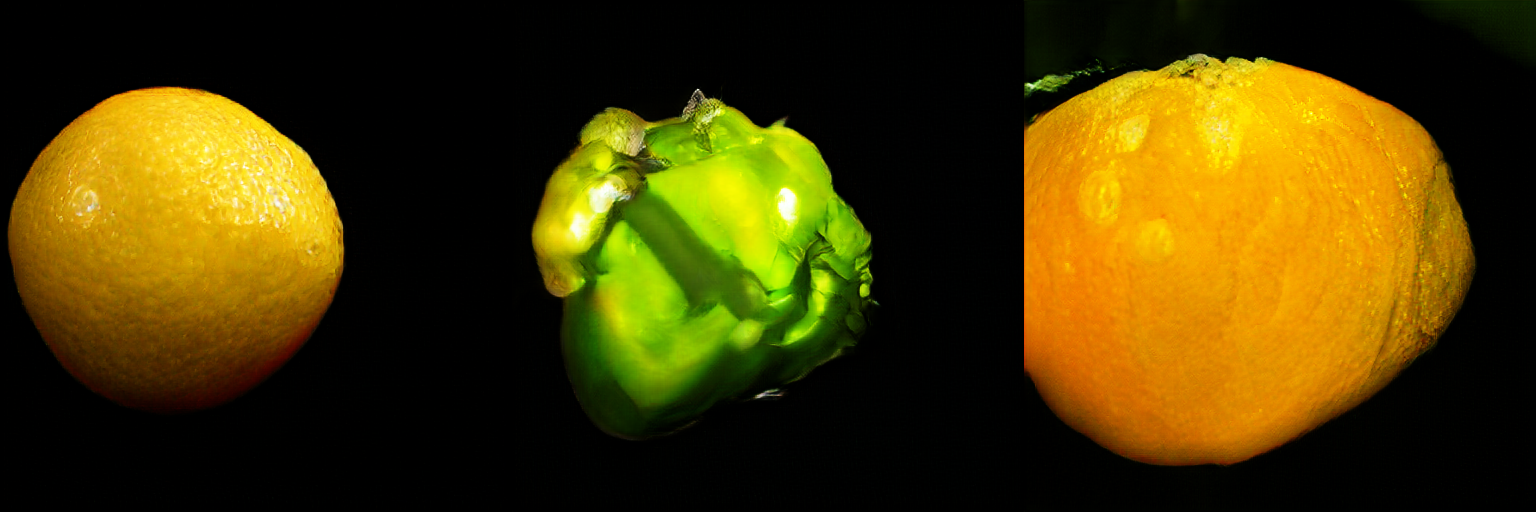
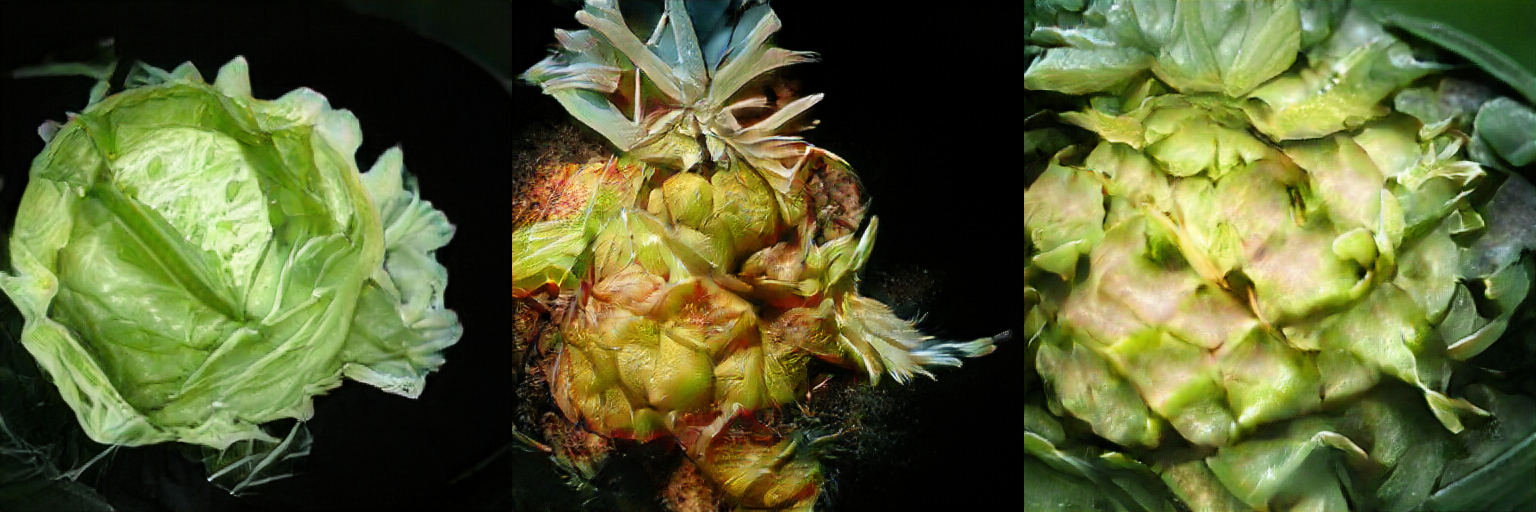
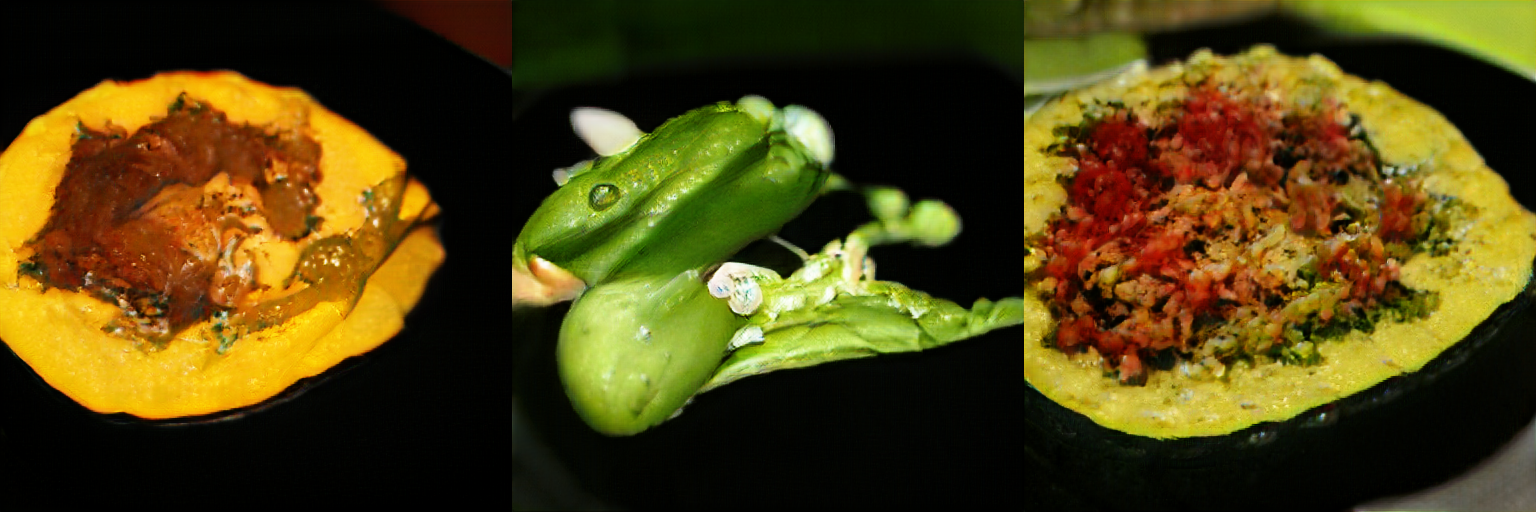


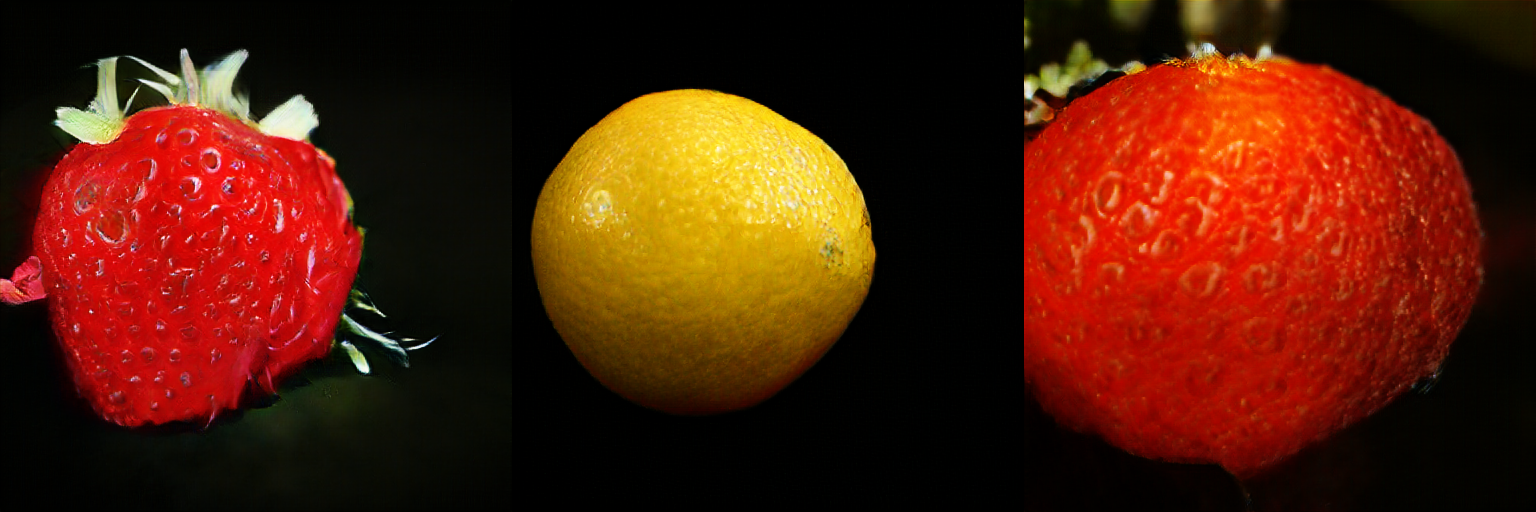

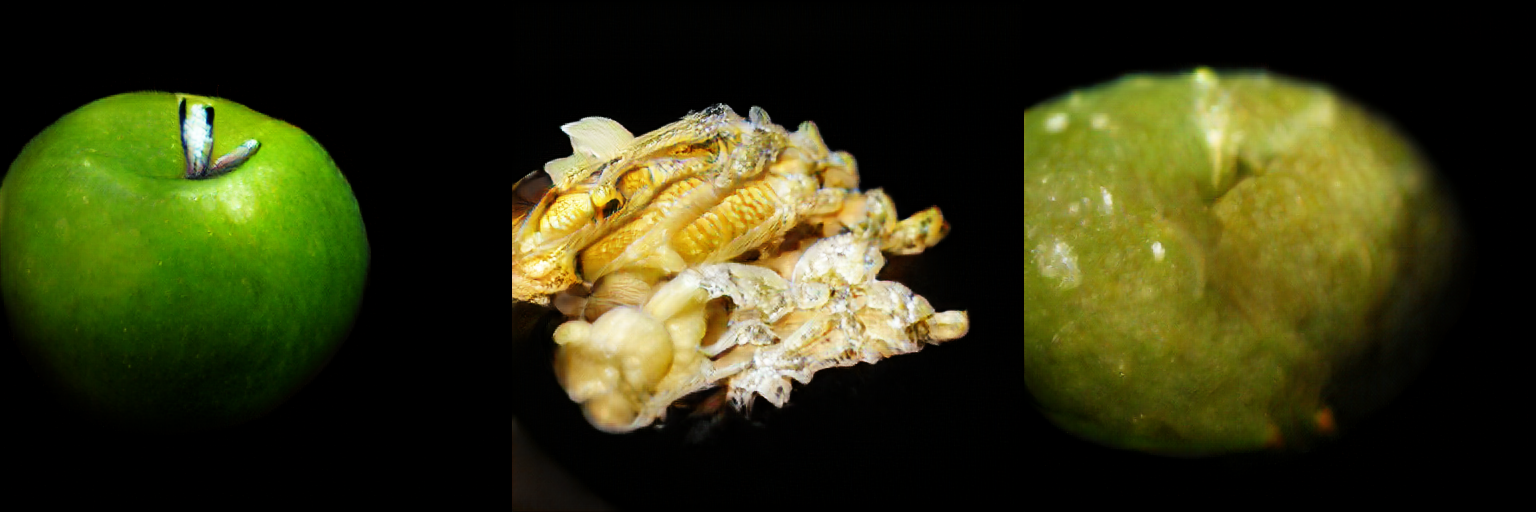
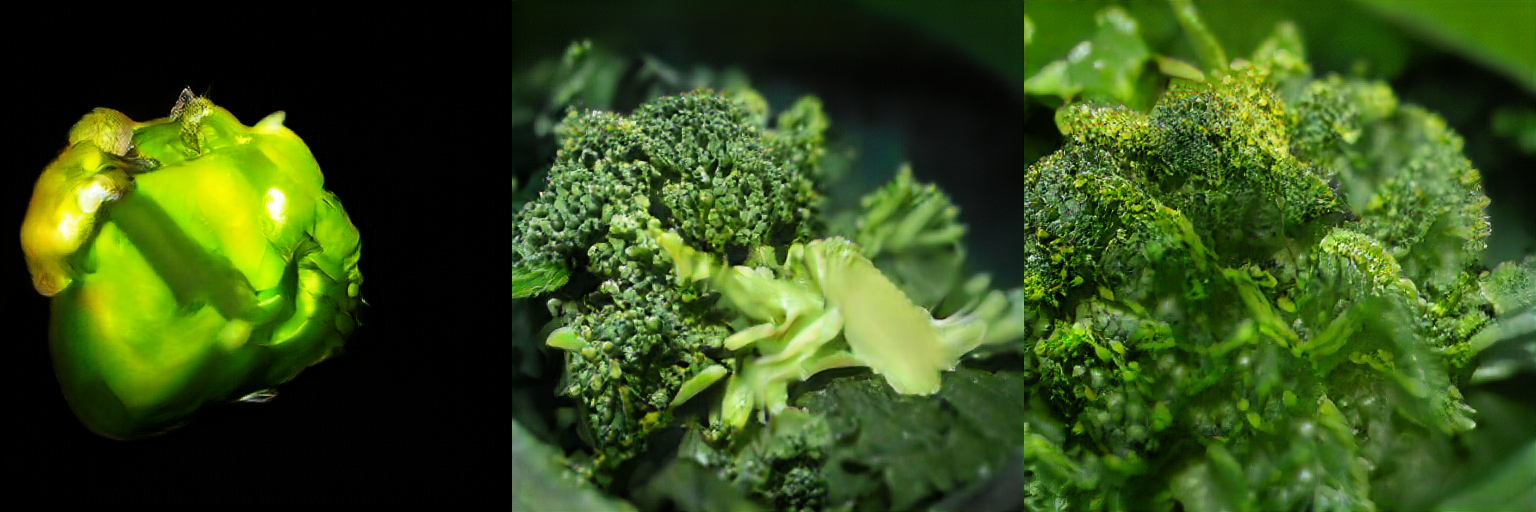
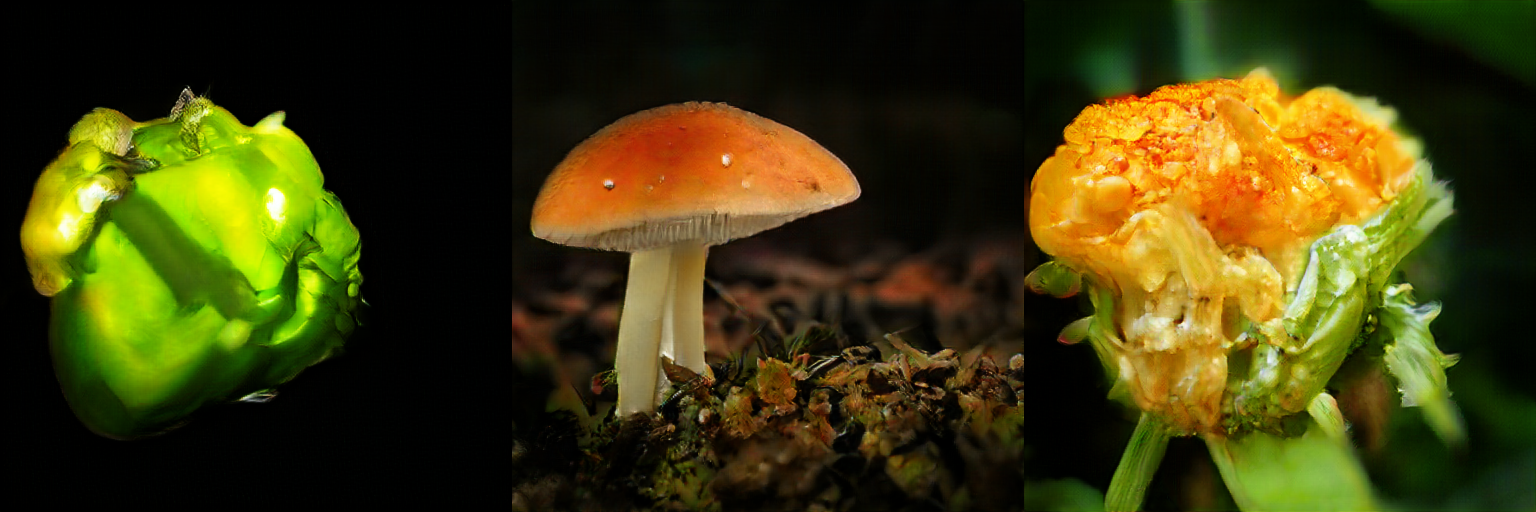
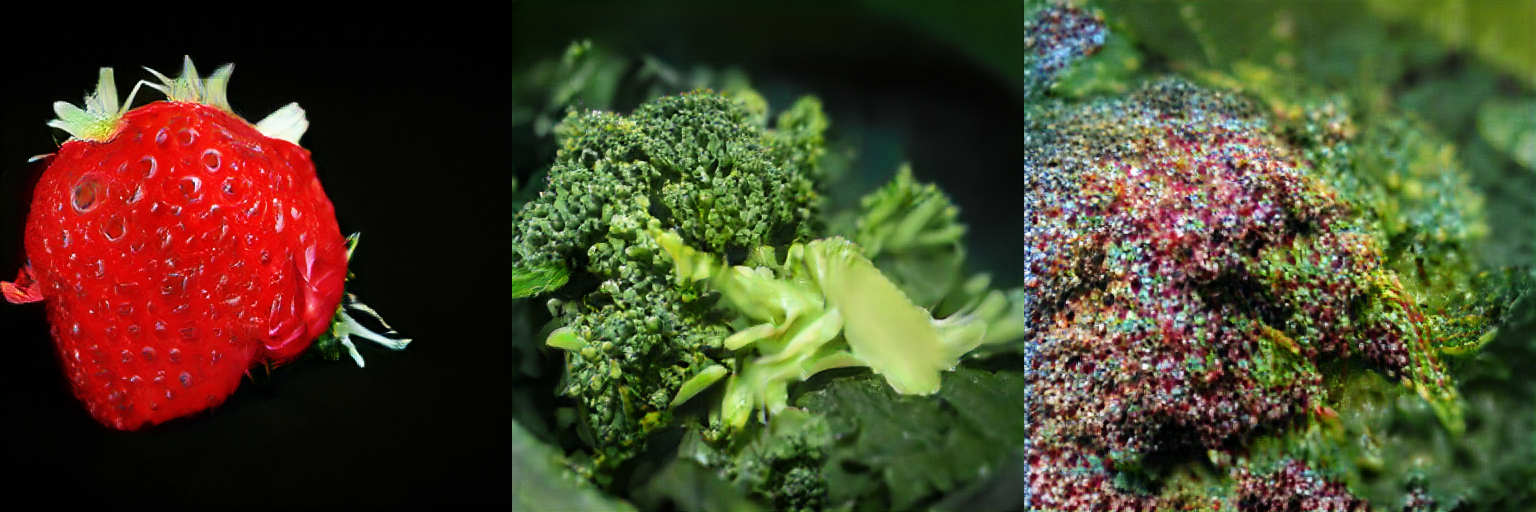

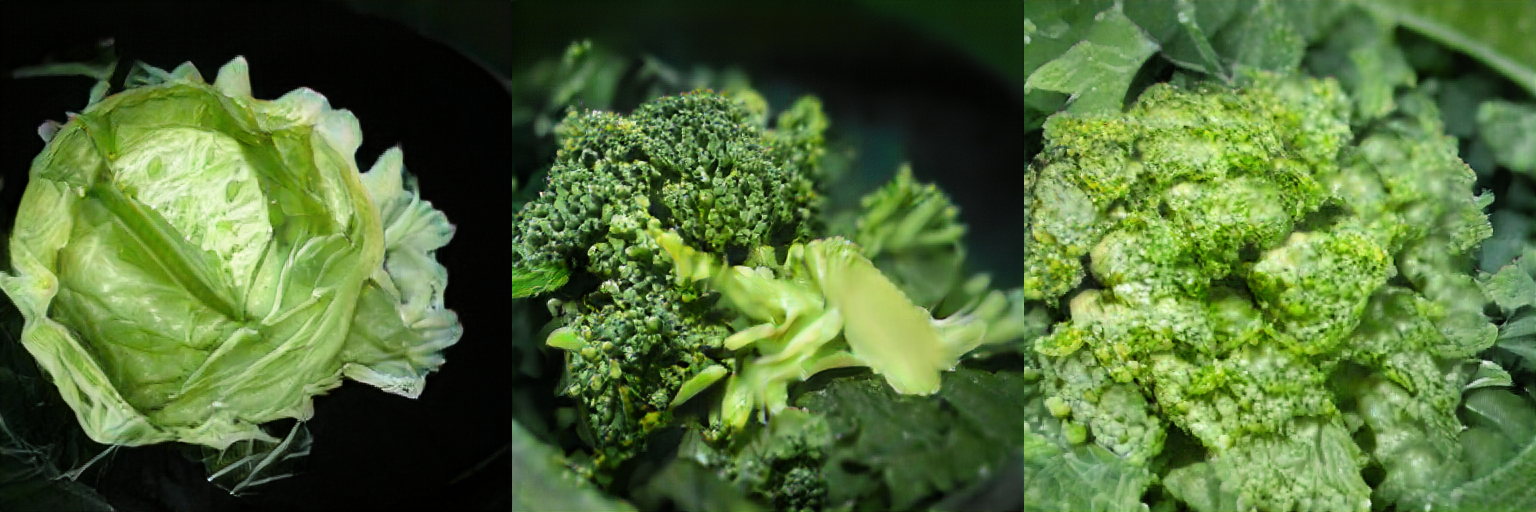
This project was created with the knowledge gained from attending a crash course in machine learning for artists taught by Gene Kogan.
Over the course of one day, myself and my classmates learned a brief history of artificial intelligence and deep learning, played with sample code so we could tinker with models trained by scientists on supercomputers, and were able to train our own models using Paperspace and their 'Machine Learning In A Box’ virtual workspace setup. Paperspace is extremely accessible and easy to use to the point where I was shocked at just how simple it all really is—you can be set up to train your own models in minutes.
One of the primary concepts we covered was generative adversarial networks, or GANs for short. The name refers to how the models are trained: two pieces of software work in opposition to one another, with one trying to create a perfect replica of whatever you’re training it on, and the other dedicated to spotting fake creations. Both systems become smarter in parallel as they learn from one another’s mistakes.
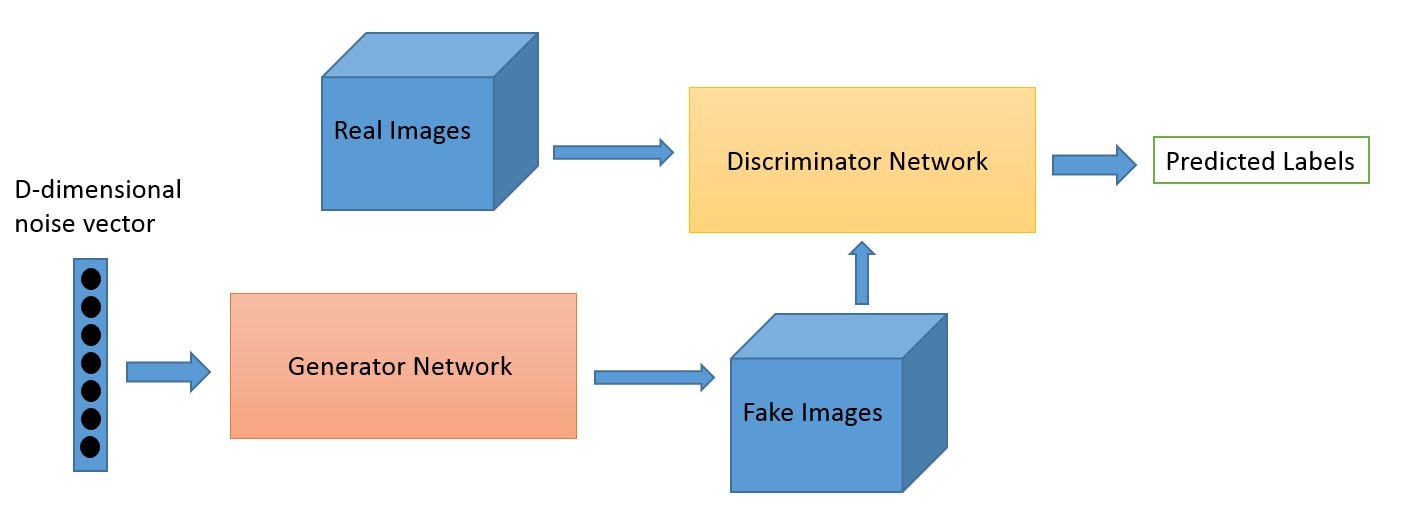
I loved the way this Wired article about the inventor of the GAN model describes the process, fully encapsulating the potential for autonomous artificial intelligence:
[It's] a wonderfully elegant idea: One AI works to create, say, realistic images, while a second AI analyzes the results and tries to determine whether the images are real or fake. "You can think of this like an artist and an art critic," Goodfellow says. "The generative model wants to fool the art critic—trick the art critic into thinking the images it generates are real." Because the second AI is working so hard to identify images as fake, the first learns to mimic the real in ways it couldn't on its own. In the process, these two neural networks can push AI toward a day when computers declare independence from their human teachers.
All of the images you see are derived from models created by Andrew Brock from Heriot-Watt University in collaboration with Jeff Donahue and Karen Simonyan from DeepMind for an internship project “Large Scale GAN Training for High Fidelity Natural Image Synthesis’. They created a new model of GAN called a BigGAN—big because the system is significantly scaled up from previous GANs. (Someone please feel free to contact me if I’m incorrect, but I’m almost one hundred percent positive there is no way to train a BigGAN without access to professional-level and very expensive computers with a ton of processing power.)
Large-Scale GAN Training: My internship project with Jeff and Karen.
— Andrew Brock (@ajmooch) October 1, 2018
We push the SOTA Inception Score from 52 -> 166+ and give GANs the ability to trade sample variety and fidelity.https://t.co/Vi1CMP2ZhX pic.twitter.com/9MzHACsvpd
Sample code to generate output from Brock/Donahue/Simonyan’s models was provided during class and was lightly modified by me to generate the above images.
I didn’t begin this endeavor with a specific aesthetic goal; rather, experimented with the inputs on the models until I achieved an output that I was satisfied with.The end result was dramatic, moody and reminiscent of classic Spanish bodegones.
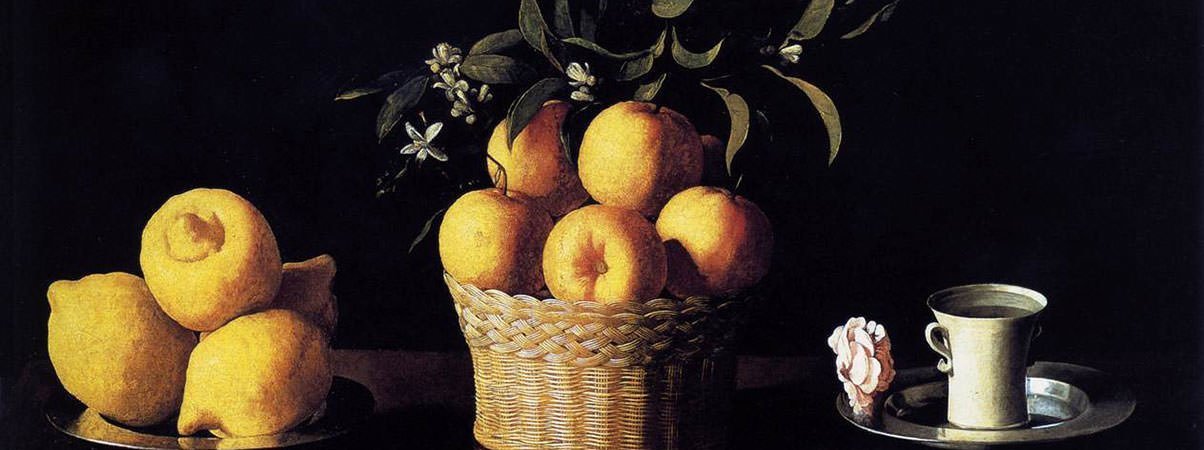 Still Life with Lemons, Oranges and a Rose, c1633 (62.2 cm × 107 cm), de Zurbarán
Still Life with Lemons, Oranges and a Rose, c1633 (62.2 cm × 107 cm), de Zurbarán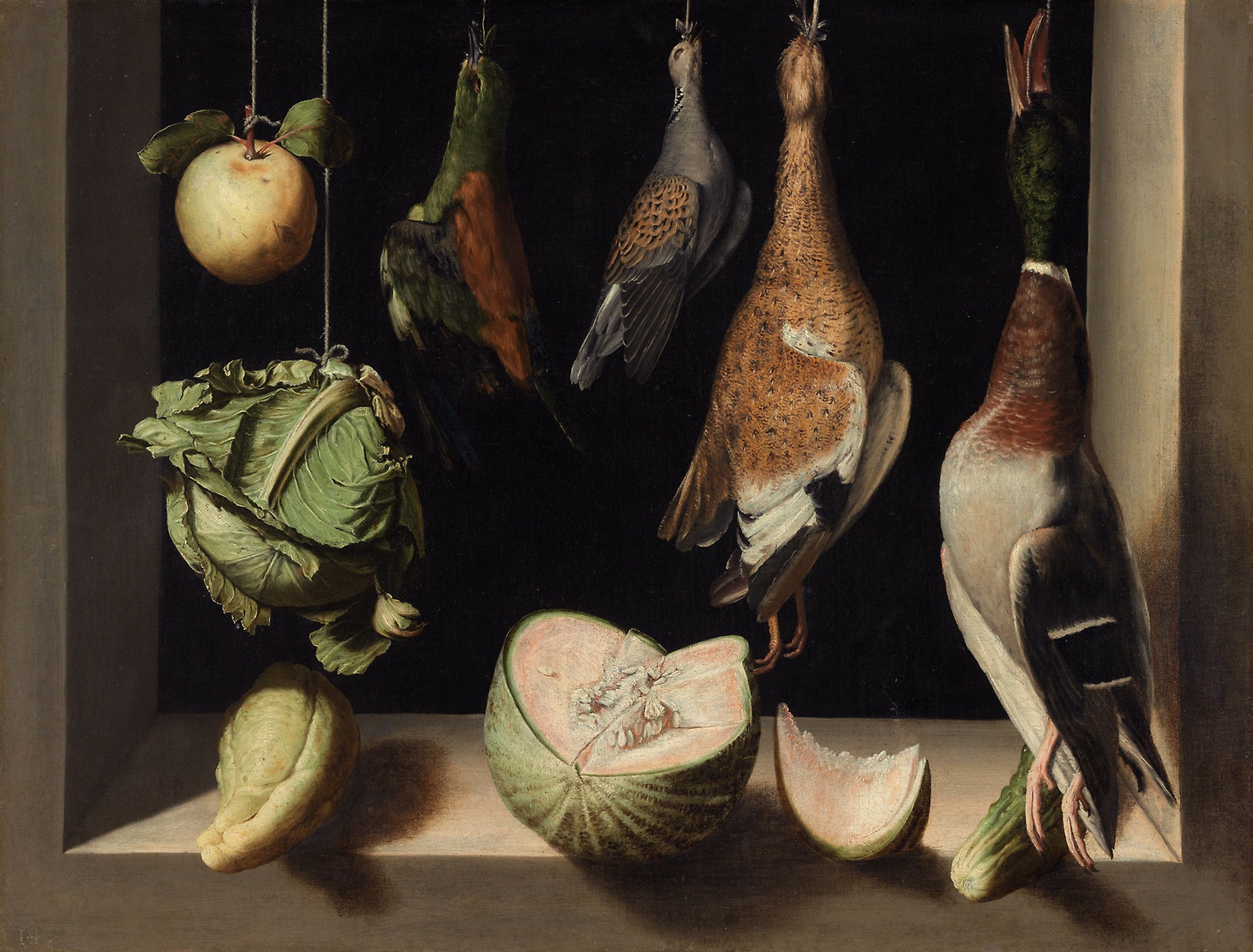 Still Life with Game Fowl, c1597-1607 (67.8 × 88.7 cm), Sánchez Cotán
Still Life with Game Fowl, c1597-1607 (67.8 × 88.7 cm), Sánchez CotánI love the rich dark backgrounds and vivid light and shadows paired with the crisp raw freshness of the produce pictured.
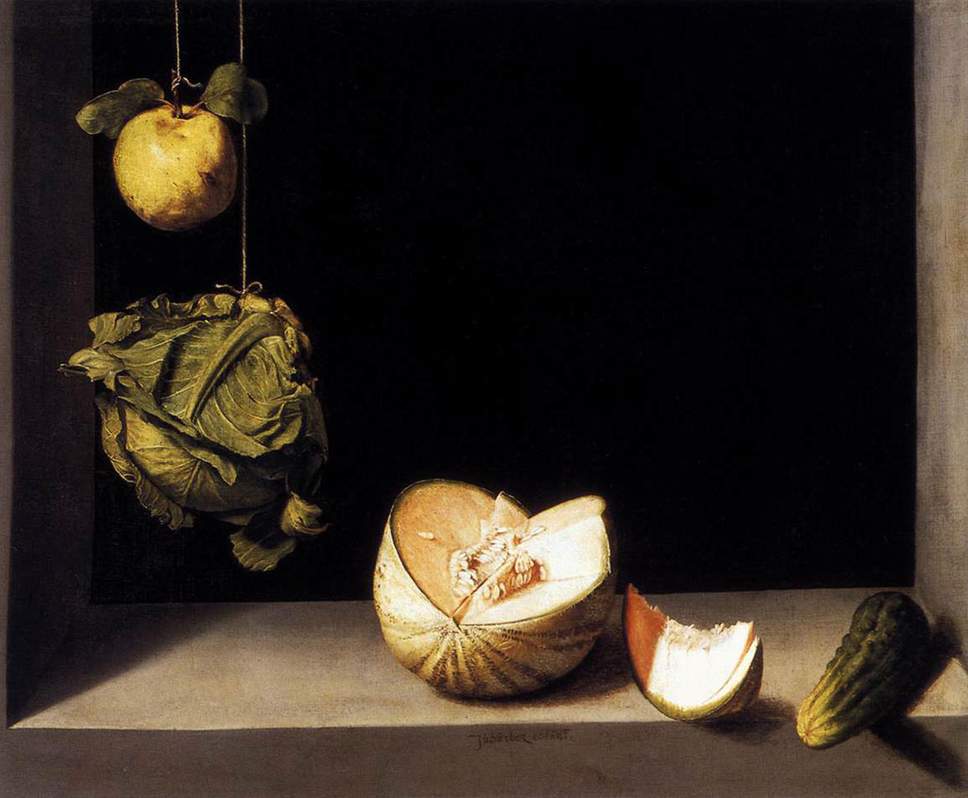
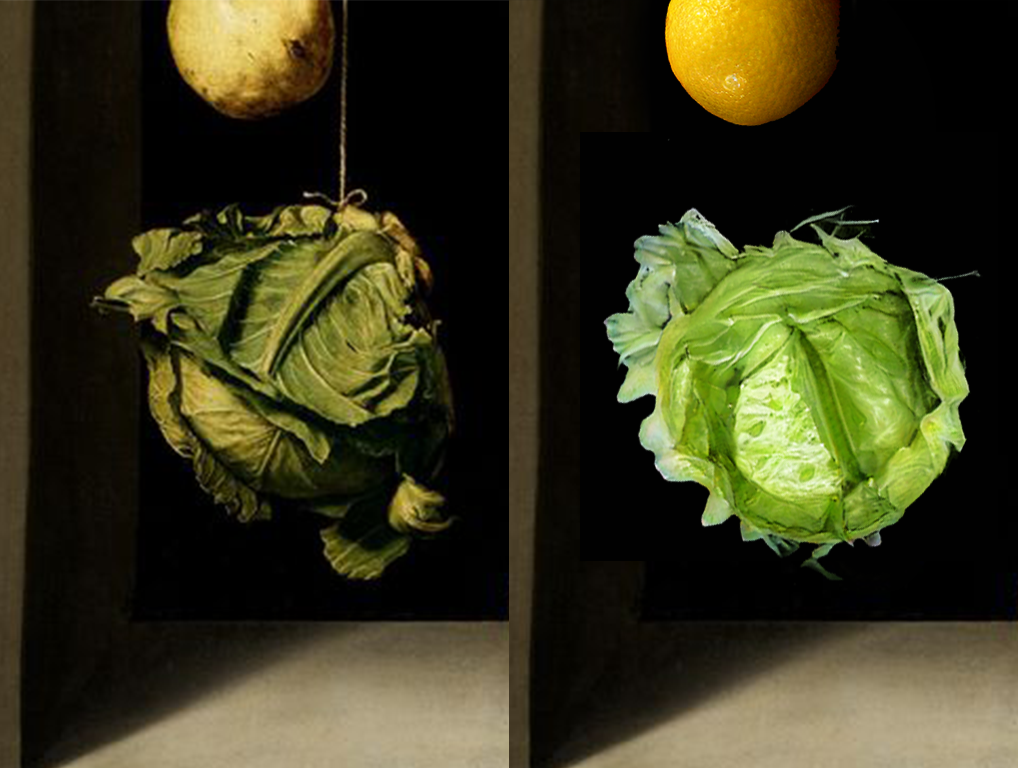
I found it striking how easily I was able to recreate a portion of Juan Sánchez Cotán’s famous painting, ‘Quince, Cabbage, Melon and Cucumber’, created in 1602. With minimal additional effort, it would be easy to adjust my quickly thrown together comp into something polished and perfect.
How food looks is a key determinant of taste—we eat with our eyes first. How would these creations taste? Some of them look delicious while others look absolutely repulsive, sometimes in a manner contrary to what we imagine they might taste like when we only see the words, not the pictures.
Strawberry-banana generally tastes amazing, but when you combine the most prominent visual characteristics of both foods it makes a strawberry that looks bubbly and rotten. The black spots of a ripe banana don’t translate well to the textured surface of the strawberry. I love how these images force introspection on what makes food visually appealing to the eye.
Furthermore, unlike other images generated by machine learning, like catflowers and hendogs, there’s an element of feasibility to these images despite the initial ridiculousness.
 CLOCKWISE FROM TOP: Plumcot, Blood Lime, Rabbage
CLOCKWISE FROM TOP: Plumcot, Blood Lime, RabbageHybrid fruits and vegetables are common, with new varietals and produce products being announced on a frequent and regular basis. There’s plumcots (plum x apricot), rabbage (radish x cabbage) and blood limes (mandarins x red finger limes).
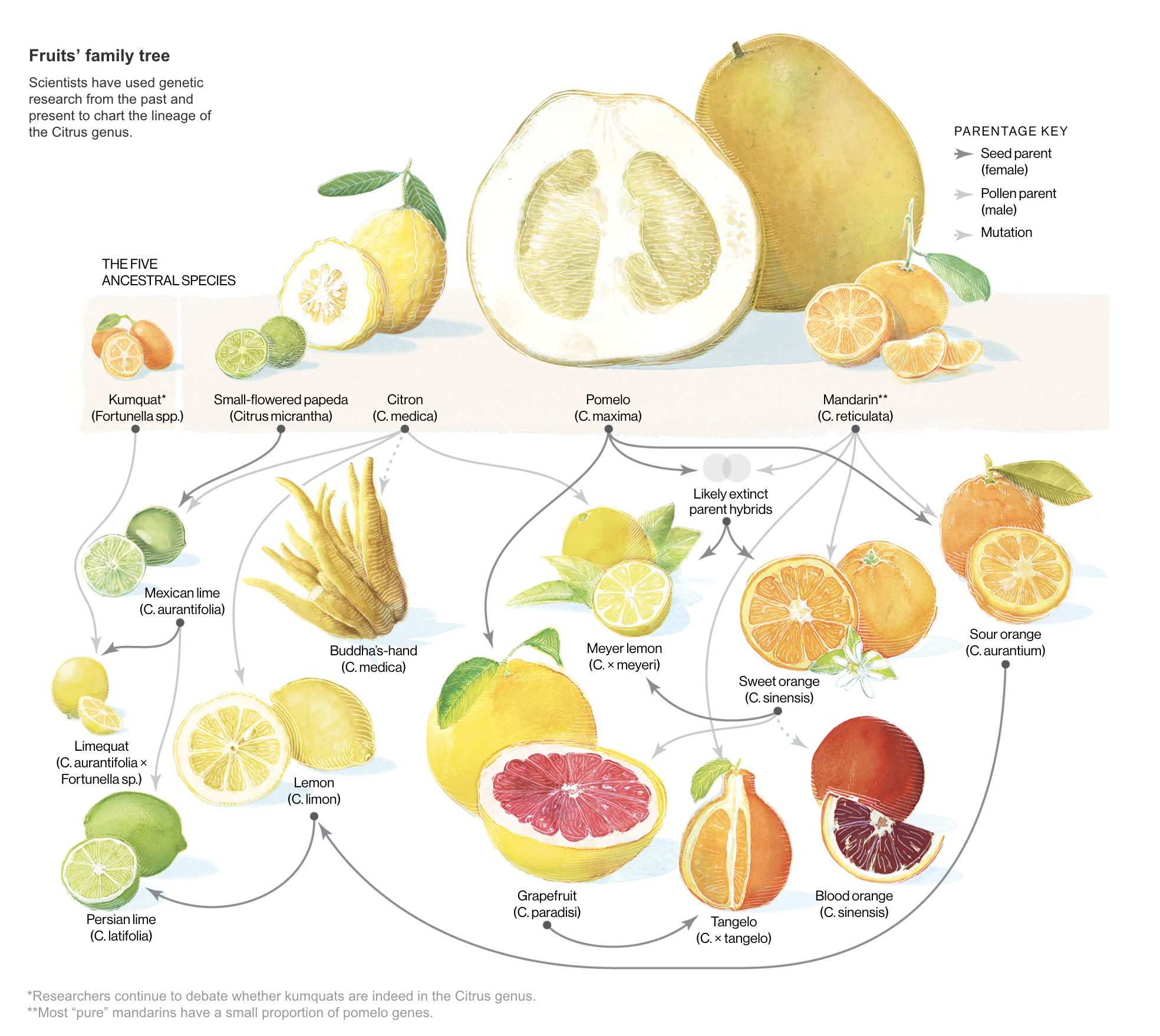 Credit: National Geographic
Credit: National GeographicSome hybrids are so common that we don’t even recognize them as hybrids any longer; for example, an orange is actually the combination of a mandarin and a pomelo, and all citrus fruits are derivative of just three common ancestors.
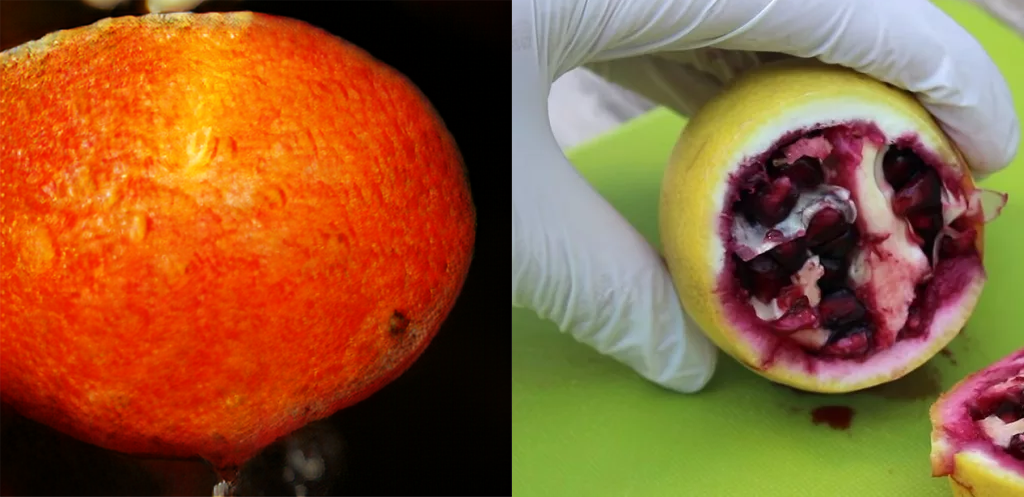 LEFT: The lemongranate generated automatically by the BigGAN, RIGHT: The fake lemongranate from the viral video
LEFT: The lemongranate generated automatically by the BigGAN, RIGHT: The fake lemongranate from the viral videoA faked viral video of a lemon and pomegranate hybrid pictured above fooled many; clarifying articles debunking the untruthful images were published on news sites and myth-busting websites like Snopes. Instead of an artistic project, this easily could have been a prank. “Look at this delicious new fruit, the orange-pineapple!”. GANs can easily be used for misinformation and deceit; a fact worth considering now, before they have done any real damage to society.
A selection of resources, references, projects and articles that I found fascinating and informed the creation of this project.
Machine Learning For Artists
Gene Kogan
How a Teenager's Code Spawned a $432,500 Piece of Art
Wired Magazine
Suggestive Drawing Among Human And Artificial Intelligences
Nono Martínez Alonso
These People Are Not Real—They Were Created By AI
Vice Motherboard
Has Artificial Intelligence Given Us the Next Great Art Movement? Experts Say Slow Down, the ‘Field Is in Its Infancy’
Artnet
Is Art Created by AI Really Art?
Scientific American
DeepStyle Generative Art Community
Reddit
The Relationship Between Art and AI
Design at IBM
GANBreeder.app
Joel Simon
Dinosaur Flowers
Chris Rodley
You thought fake news was bad? Deep fakes are where truth goes to die
The Guardian
Disinformation On Steroids
The Council On Foreign Relations
This is only just the beginning, there's so much more to learn, explore and try.
There are many natural next steps for me to take–one of the best things about learning a new creative discipline, so many awesome things to create!
I’ve been thinking about:
— Training my own models on some new produce
— Working with someone smarter than me to see if there’s a way to optimize a model to recognize the qualities that indicate if a particular fruit or vegetable tastes good, perhaps even figuring out a way to use a flavor classifier like Gastrograph in the mix
— Assembling original still-lifes with an array of fantasy fruits and veggies.
Feel free to take these ideas and run with them, too! I’d love to see what you make.